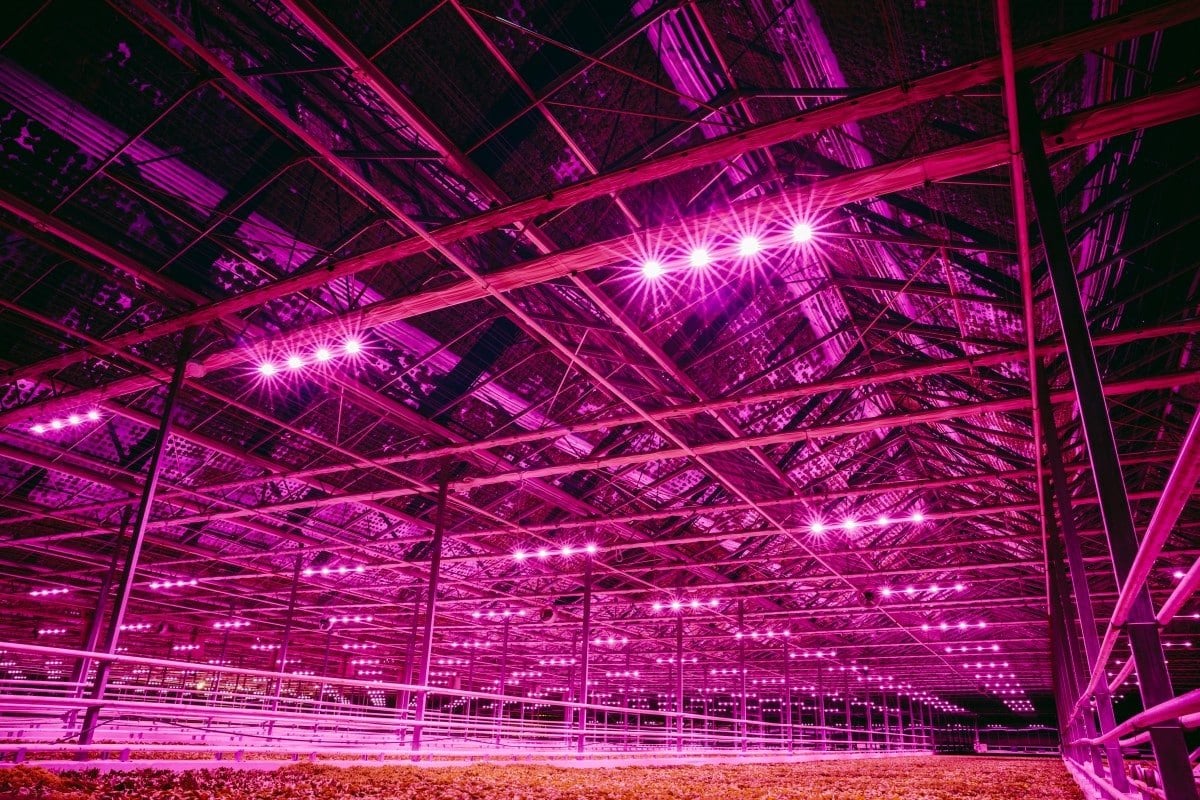
Greenhouse owners get double the benefit if they use our lighting systems. Firstly, they pay less for electricity. Secondly, they get higher yields. This is according to the founders of the Plantalux start-up.
Plantalux is a family start-up. Originally, father (Jacek Lachowski) and two sons (Jakub and Rafał) had been working with LED lamps. By chance, they found out about a competition for crop lighting that was set up by one of the agricultural institutes. They built a lamp in their grandfather’s garage and sent it to the institute. After six months, they heard the news: they had won first place. Under their lamps, the plants grew the most, and energy consumption was the lowest as well. The family followed up on that win and founded Plantalux. Today, this Polish start-up lights up greenhouses across hundreds of hectares in Poland, Germany, the Netherlands, Macedonia, Israel and Canada.

What is your product?
Jakub Lachowski, CEO and co-founder: Plantalux is an intelligent lighting control system for greenhouses which uses LED lamps from our production line. These lamps emit the exact amount of lighting required for each crop. The thing is, each plant has its own particular characteristics. If we provide it with light just from within the spectrum it needs, we can maximize its growth with minimal energy consumption. Take tomatoes and herbs, for example. Tomatoes are plants that climb upwards. For this type of plant, we use infrared lamps with a very low ratio of blue to red. We also simulate sunrises and sunsets. We get the plants to grow at a lower height and get more tomatoes and less green matter this way. In turn, when growing herbs, we provide a brighter light with a greater proportion of blue. Then we achieve faster growth and more green matter, because this is what breeders want.
What kind of problem do you solve?
We make more money for our clients. High pressure sodium lamps (HPS) are typically used in greenhouses. Their main disadvantage is that they consume a lot of energy. On average, 1000 watts are installed per hectare of greenhouse, and the annual cost of lighting such a 1-hectare greenhouse is about 2.5 million PLN (about 600 000 euros). We are cutting costs by up to three times with our LED lamps! There is also the advantage that with LED lighting, we are able to accelerate photosynthesis and production. Not only do we reduce the bill, but we also increase the yield.
How does your product differ from the competition?
Most manufacturers work with Osram or Philips LEDs. We have our own diodes, and our lamps have a longer life. We have also introduced a consultation service, i.e. we talk about how to grow plants with our lamps. A plant is a living organism and even a positive change can turn out to be either good or bad. In addition to the new light source, you also need to know what temperature amplitude to set, how much CO2 to release, how to fertilize, what humidity should be used, how to ventilate.
The cherry on the cake is our latest lamp. It can be used independently for different crops, because its structure has different spectrums, which can be controlled in real time by the app.
What were the most difficult moments?
The beginning. We made the first lamp. We had confirmation from the university that it was working. We approached our first client with it, and she said: “I don’t believe in university. Which colleague of mine uses your product?”
We told her that it’s not on the market yet. “Oh, yeah. Well, come by if anyone I know uses it.” It’s the same with the other clients. And so, we bounded from door to door and everyone asked us the same thing: “Which friend of mine uses it?” Nobody wanted to be the first to buy it. It took us about six months, I guess. Finally, we showed up at the expo and we managed to win our first client; only then did we start making sales.
Which achievement are you particularly proud of?
Some time ago we came up with the idea of moving towards developing a lighting control software application. We launched this type of lamp with an app on the market. We traveled with it around the world for half a year. Then it turned out that one of the world’s leading companies also introduced a control system. I was really proud that a small company from Poland invented this product, and that top manufacturers are also going in this direction.
What are your plans for the coming year?
In July we are opening a company in the USA and expanding our presence in Canada – we have signed two contracts with distributors. We also want to have a stronger position within the Dutch market, and we are considering more countries in Europe.
This year we are also building our own experimental greenhouse. Now we’re going to go in three directions: not only are we going to produce equipment and make our own apps, but we’re also going to test them. Due to the fact that we are small, we can pivot relatively quickly and improve hardware, something which is very difficult for large corporations to do.
What do you want to achieve in the next 5 years?
In 5 years, we want to be highly visible on the Canadian and American markets, because these markets are rapidly developing in terms of new technologies in agriculture. In Europe, on the other hand, we want to be seen as experts in the field of lighting.
Founders: Jakub Lachowski, Rafał Lachowski
● year founded: July 2016
● financial info: The start-up was set up with the support of EU grants. Two investment funds have invested in the company. Additionally, external investors have invested in the company.
How many employees? And are they hiring?
15 permanent employees. About 30 people work in the production season. They are looking for people for R&D and sales.
Ultimate goal in a few words:
To be a strong presence in the lighting market in Europe and North America.
Need some inspiration? All our Start-ups of the Day can be found here

